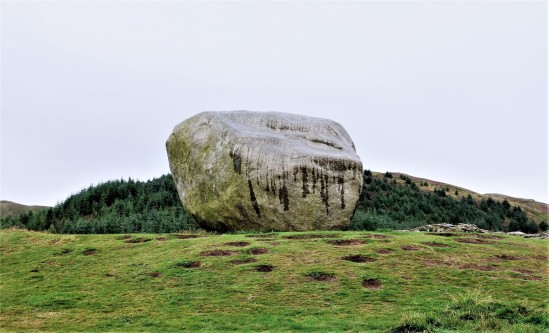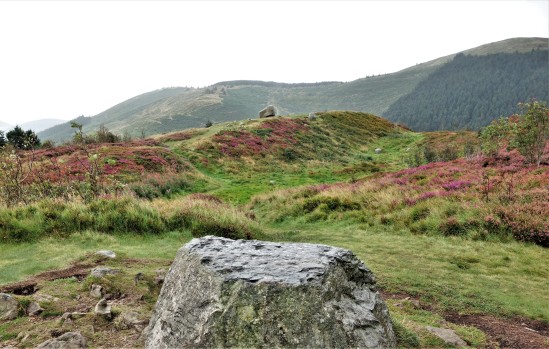Cloughmore Stone, known locally as “The Big Stone” is a huge granite boulder that sits about 1000ft up on the side of Slieve Martin overlooking Carlingford Lough and the Cooley peninsula in County Louth and above the village of Rostrevor County Down.

The name comes from the Irish “an Chloch Mhór” which means “the big stone” and its believed to weigh around 50 tonnes having been transported via glacial retreat from Scotland (from an island in Strathclyde bay) and deposited here over 10,000yrs ago during the last Ice Age.

Local legend has it that the stone was thrown from the Cooley Mountains on the other side of Carlingford Lough, by the giant Fionn mac Cumhaill (Finn McCool) who gets accused of a lot of things here in Northern Ireland haha (Lough Neagh, The Giants Causeway etc).

The stone has many names and dates carved into it which go back centuries remembering those from history who have visited there. The Cloughmore Stone is a venue at Easter where the residents of Rostrevor would go up and roll their Easter eggs down the hill. A sort of a tradition for the Rostrevor residents.

Quite impressive even on a rainy day like this one and there are some great views from the surrounding area.

Theres a really nice walk up here through Rostrevor forest but it does get steep at times. Bring a lunch and rest at the top.




















